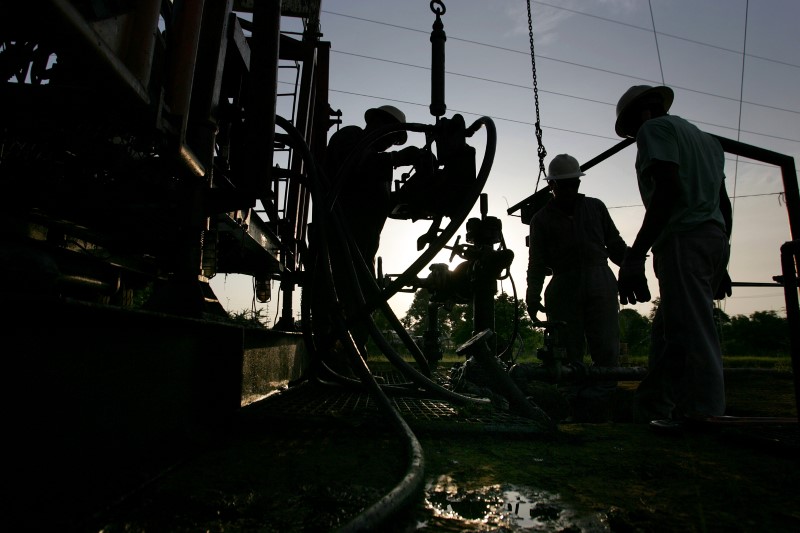By Geoffrey Smith
Investing.com -- Crude oil prices fell on Friday and were on course to end a directionless week broadly lower, against a backdrop of growing signs that the output restraint that has supported the market for the last nine months may be starting to crack.
That's happening at a time when concerns about the trajectory of global demand are still lingering, due to the ongoing spread of Covid-19 in many parts of the world. Japan announced that certain key prefectures will tighten restrictions on movements and businesses earlier on Friday, while Germany's federal government is still trying to persuade state governors of the need for a 'short,sharp lockdown' in Europe's biggest economy.
In addition, infection rates continue to show few signs of coming under control in either India or Brazil, the latter of which posted yet another record day for deaths on Thursday.
By 10:45 AM ET (1445 GMT), U.S. crude futures were down 0.1% at $59.57 a barrel, while Brent crude was flat at $63.20 a barrel. The WTI contract hasn't traded above $60 since Tuesday, unable to build on surprisingly large drops in U.S. crude inventories due to a simultaneous rise in gasoline stocks. Prices ticked up marginally after reports that Saudi Arabia had shot down a drone launched by Houthi rebels in Yemen that was aimed at one of its cities.
Earlier Friday, a survey by S&P Global (NYSE:SPGI) Platts suggested that production by ‘OPEC+’ members rose by 450,000 barrels a day in March, with Russia and Iraq, the second and third-largest exporters in the group, both pumping above their agreed limits, along with Nigeria.
Two countries not covered by the agreement, Libya and Iran, are both increasing output too: Iran’s output rose by 130,000 barrels a day to a two-year high of 2.3 million b/d, while Libya pumped 1.19 million, an eight-year high. It plans to pump 1.45 million b/d by year-end.
Later Friday, Baker Hughes will release its latest data on active U.S. oil rigs. That number topped 400 for the first time in a year last week, indicating an increased willingness of U.S. producers to raise output.
Elsewhere, newswires reported details of a draft long-term energy strategy document in Russia, which suggested that the country's oil output may have peaked already in 2019 at an average of 11.25 million barrels a day. The draft still expects only a modest drop of 100,000 b/d by 2029, but forecasts an accelerated decline thereafter due to the depletion of many mature fields. Given the importance of the oil and gas industry to Russia's budget, it's not uncommon for the industry and the ministry that regulates it to issue alarmist forecasts about production levels. The country has a highly dynamic tax policy which responds quickly to changes in oil prices and determines whether and when new fields are developed.
